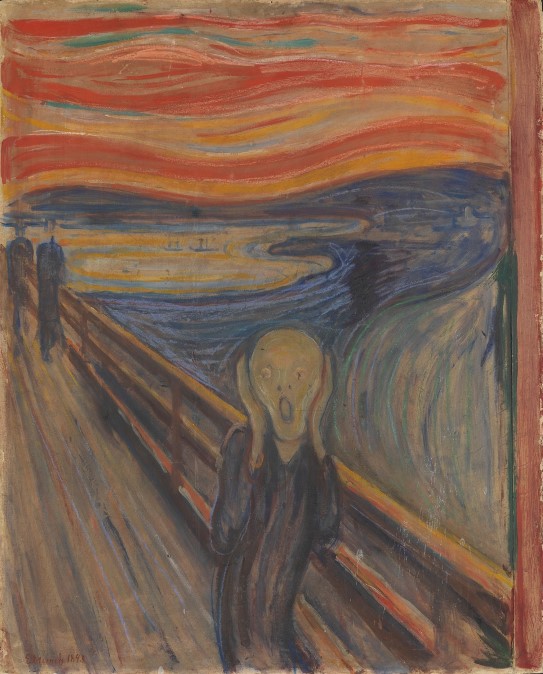The Scream
Edvard Munch
Transcription
Narrator
In an entry in his notebook, dated 22nd of January 1892, Edvard Munch described a powerful experience:
Actor:
“I was walking along the road with two friends – the sun was setting – I felt a breath of melancholy – Suddenly the sky turned blood-red – I stopped and leaned against the fence, tired to death – looking out across the flaming clouds, like blood hovering over the blue-black fjord and city – My friends walked on – I stood there quaking with dread – and I felt a great, unending scream through nature.”
Narrator
The experience Munch describes here is the starting point for the painting in front of you.
The blood-red lines in the painting have been compared with soundwaves, as though Munch was trying to paint the sound of a scream through nature.
The distorted, despairing figure who meets us in The Scream is universal and genderless, allowing everyone, regardless of age, gender, or background, to identify with it. The image hits something universal, but simultaneously unique.
The Scream is one of the world’s most famous artworks, and has become a universal symbol of anxiety and fear. You can find the image everywhere from fridge magnets to horror movies, and it even numbers among the very few artworks that have their own emojis. More than 100 years after Munch had his overwhelming experience, millions of people use the icon he created to express anxiety when communicating.
Munch made several different versions of The Scream. He made the version that hangs here at the National Museum in 1893, and it is considered to be the very first. It was made with tempera paint and wax crayon on cardboard, which is now so fragile that the lighting in this room has to be kept dim, to prevent the painting from disintegrating.